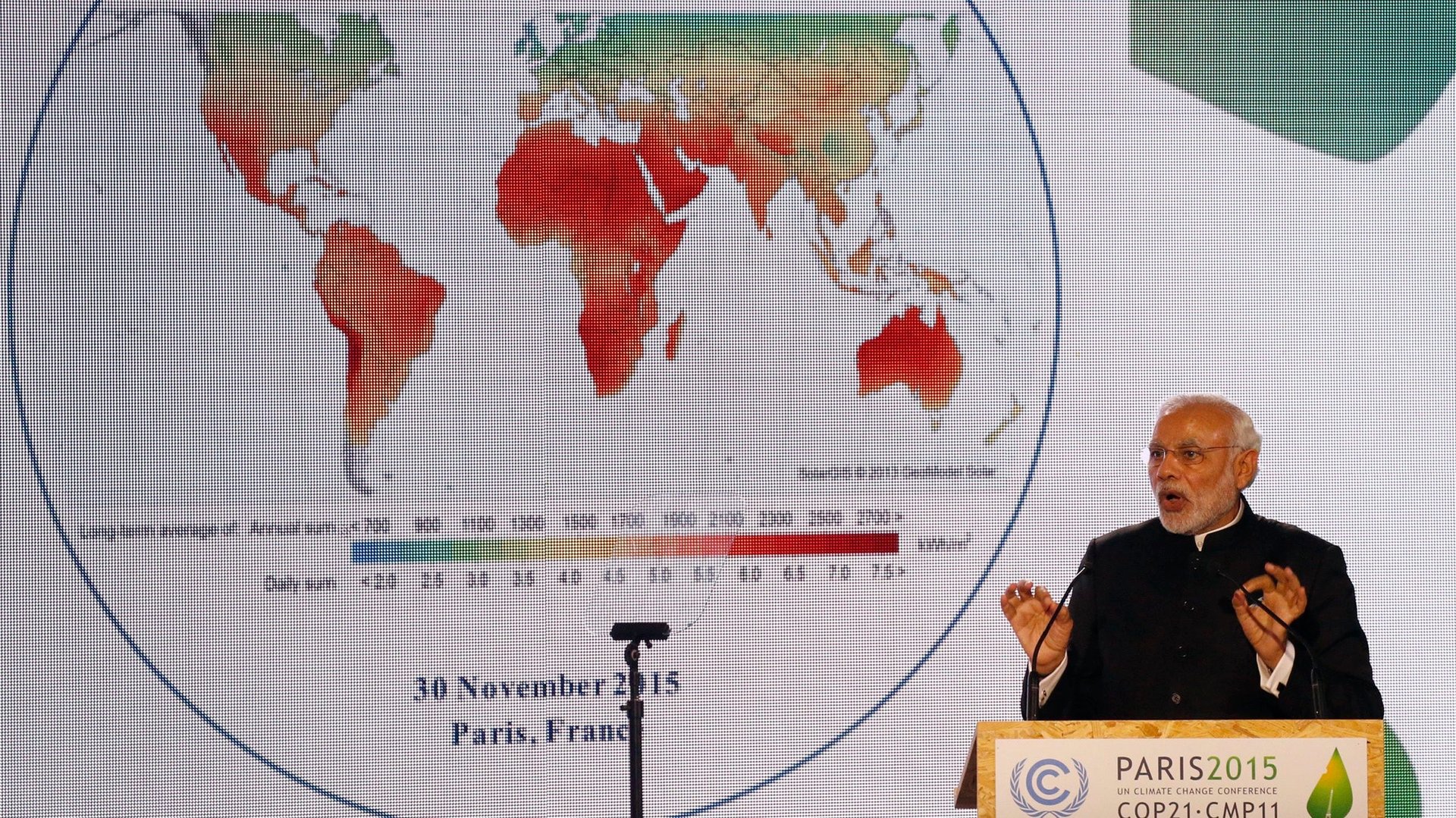India’s “solar alliance” is a great idea with one fatal flaw
India’s plans for increasing solar power capacity are among the world’s most ambitious. Now, India is using the Paris climate conference to lay out a vision for the world to follow it into a solar future. The only problem will be whether India’s simultaneously planned expansion into coal will wipe out not only the benefits of its own solar industry, but that of other countries as well.


India’s plans for increasing solar power capacity are among the world’s most ambitious. Now, India is using the Paris climate conference to lay out a vision for the world to follow it into a solar future. The only problem will be whether India’s simultaneously planned expansion into coal will wipe out not only the benefits of its own solar industry, but that of other countries as well.
Speaking at the opening of the COP21 climate conference yesterday, prime minister Narendra Modi promoted his idea of a “solar alliance” of 120 countries. These participants, mostly in Latin America and Africa but also including the US, China, and France, would work together to increase solar capacity across emerging markets. The idea chimes with a conference theme: rich nations helping poorer nations expand their clean energy sectors through investment and technology sharing.
The scheme also fits into India’s new push into solar. Over the next seven years, the country plans to ramp up its domestic solar energy production capacity from 4 gigawatts (achieved in June 2015) to 100 gigawatts by 2022. One gigawatt is enough power for between 700,000 and 750,000 Western homes, so 100 gigawatts could fulfil the power needs of 75 million Indian households.
India’s domestic commitment to solar is “significant,” said Bob Ward, policy director at the Grantham Research Institute on Climate Change and the Environment at London School of Economics, to Quartz. “[Solar] is far cheaper and easier than building a centralized grid powered by fossil fuels,” as a way to bring electricity to the between 3 and 4 million people in India who don’t yet have it, he said.
But India is planning on the fossil-fuel grid as well. India’s emissions projections are based on a yearly 8.6% growth rate (pdf, p.27) and India is set to become the world’s biggest source of coal demand growth, according to the International Energy Agency.
The IEA also projects how much solar is likely to grow, globally. While the possible increase is large, the organization notes that we’re not currently on course for such a significant increase:
The current trends are based on nothing changing from the midpoint of the year in which the projection was made. The new policy scenario is based on what countries have so far said they’ll do. And the “450 Scenario” is a comprehensive look at what collective action would be needed to keep global warming to below the 2°C level—which is the aim of the COP21 talks.
With this in mind, Modi’s solar alliance—for which he’s hoping to source $400 million and for which India has pledged $30 million (to build the alliance headquarters in New Delhi) is a step in the right direction—but a small one.